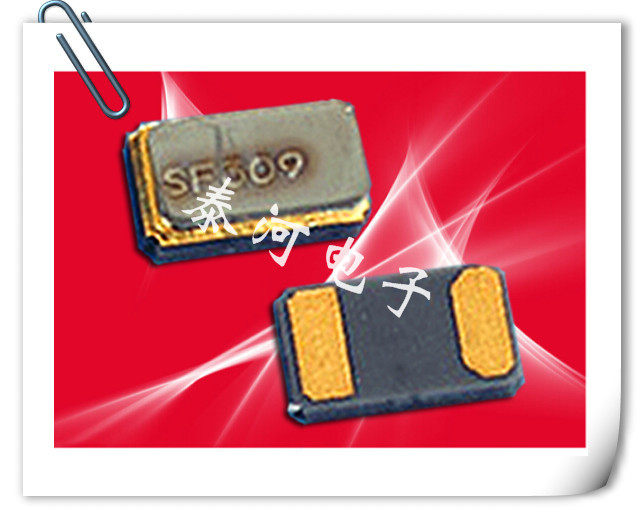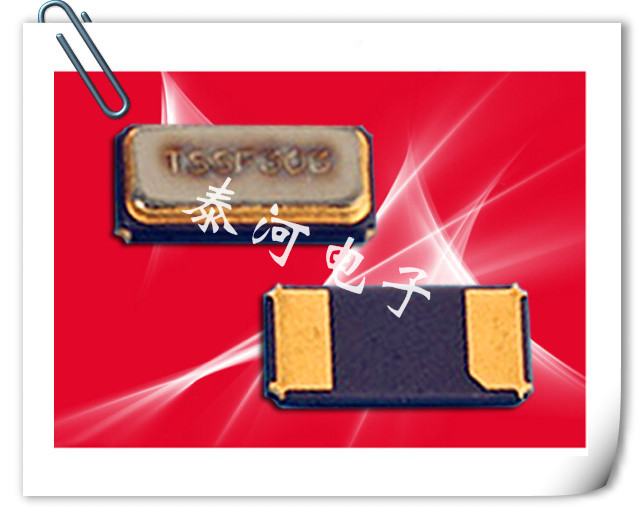
-
精工晶振,32.768K晶体,SC-16S晶振,Q-SC16S03220C5AAAF晶振
贴片石英晶体,体积小,焊接可采用自动贴片系统,产品本身小型,表面贴片晶振,特别适用于有小型化要求的电子数码产品市场领域,因产品小型,薄型优势,耐环境特性,包括耐高温,耐冲击性等更多 +

-
SEIKO晶振,贴片晶振,SC-20S晶振
32.768K时钟晶体具有小型,薄型,轻型的贴片晶振表面音叉型晶体谐振器,产品具有优良的耐热性,耐环境特性,可发挥晶振优良的电气特性,符合RoHS规定更多 +

-
SEIKO晶振,石英晶体谐振器,SC-32A晶振
工作温度:-55°~125° 储存温度:-55°~125° 负载电容:12.5PF 贴片晶振本身体积小,超薄型石英晶体谐振器,特别适用于有目前高速发展的高端电子数码产品,因为晶振本身小型化需求的市场领域,广泛用于笔记本电脑,无线电话,卫星导航HDD, SSD, USB, Blu-ray等用途,符合无铅焊接的高温回流焊曲线特性更多 +

-
精工晶振,贴片石英晶振,SC-32S晶振,Q-SC32S03220C5AAAF晶振
贴片石英晶体,体积小,焊接可采用自动贴片系统,产品本身小型,表面贴片晶振,特别适用于有小型化要求的电子数码产品市场领域,因产品小型,薄型优势,耐环境特性,包括耐高温,耐冲击性等,在移动通信领域得到了广泛的应用更多 +

-
石英晶振3*9mm,石英晶体谐振器
非常小的SMD型晶体 2 高精度,高频率稳定 3 为减少电磁干扰的影响非常好 4 蓝牙无线通信集,DSC,PDA和手机的最佳选择 5 符合ROHS无铅更多 +

-
贴片晶振,5070晶振,无源石英晶体
非常小的SMD型晶体 2 高精度,高频率稳定 3 为减少电磁干扰的影响非常好 4 蓝牙无线通信集,DSC,PDA和手机的最佳选择 5 符合ROHS无铅更多 +
- [公司新闻]Renesas Electronics Corporation领先全球的晶振生产商2023年09月19日 10:02
- Renesas Electronics Corporation领先全球的晶振生产商,瑞萨电子通过完整的半导体解决方案提供值得信赖的嵌入式设计创新,使数十亿互联智能设备能够改善人们的工作和生活方式。我们的使命是通过将技术引入汽车、工业、基础设施和物联网四个领域,帮助开发一个更安全、更健康、更环保、更智能的世界。
2021年,瑞萨完成了对Dialog的收购,扩大了其在欧洲的业务范围。随着Intersil、IDT和Dialog的加入,瑞萨电子作为一家真正国际化的公司进入了一个新时代,拥有进步的思维和引领行业的现代愿景。
瑞萨电子集团作为一家提供采用了先进技术的优质半导体产品和为用户提供诚挚服务,为全世界人民创造美好未来的企业,将为推动社会的可持续发展做出贡献。 - 阅读(58)
- [公司新闻]ITTI Corporation2023年09月09日 16:33
- ITTI以简单而巧妙的理念成立:成为您的首选战略供应商,提供最高质量,最低成本的石英电子元件。凭借我们完整的晶体,晶体振荡器,晶体滤波器,陶瓷谐振器和技术最先进的晶体振荡器系列,ITTI的能力和资源是世界一流的。ITTI是一家总部设在美国的跨国公司。然而,许多客户已经将他们的项目转移到了亚洲。因此,在2000年,我们的管理层决定在香港设立地区总部,拥有一支专业的行政、工程、销售和市场团队,以提供更好的服务给我们的客户。我们后来在韩国、中国大陆和台湾等地区设立了销售办事处。通过这样做,我们更接近市场和客户,使我们更好地了解他们的需求和期望。从那时起,我们成功地与客户建立了更牢固的关系。
- 阅读(99)
- [公司新闻]关于伊西斯ECS公司2023年09月04日 14:42
- 我们的历史
ECS公司成立于1980年,总部位于美国堪萨斯州的Lenexa。我们从事国际业务已有40多年的历史,是全球公认的创新频率控制,同步,连接和磁力解决方案的开发商和制造商。
ECS公司被多家世界级研究公司和电子设备 设计公司评为全球十大无源晶振元件公司之一。
截至目前,ECS公司已经为150多个国家的客户提供了超过34亿个无源定时和磁性解决方案。
除了推动技术发展的产品,ECS公司在韩国、日本、中国、新加坡和美国拥有超过18个地点的全球工程和销售支持系统。
- 阅读(194)
- [公司新闻]Raltron拉隆2023年09月04日 09:21
Raltron Electronics Corporation于1983年在佛罗里达州迈阿密成立,现已发展成为世界上最受认可和经验丰富的频率管理产品制造商之一。从简单的表晶到高稳定性的恒温晶振,Raltron提供业内最全面的频率管理设备系列。
公司致力于研究和开发,多年来不断创造领先的晶体和振荡器设备和技术。今天,Raltron提供高性能频率控制解决方案,在价格,质量,应用和客户支持方面满足并超越客户期望。
为了满足快速增长的无线应用市场的需求,Raltron还将自己定位为一个完整的解决方案供应商,在其晶体和振荡器产品中添加了SAW器件和LTCC滤波器。该公司还为同一市场开发了完整的天线产品系列。- 阅读(118)
- [公司新闻]台湾嘉硕科技股份有限公司2023年08月16日 17:18
台灣嘉碩科技成立於 1997 年 11 月,主力產品為表面聲波 (SAW) 元件 (主要包含射頻表面聲波濾波器、中頻表面聲波濾波器及表面聲波共振器等)、體波 (BAW) 石英元件 (主要包含石英振盪晶體、石英濾波器、石英振盪器、壓控石英振盪器、石英壓控/溫度補償振盪器等) 及其相關模組,應用領域涵蓋衛星數位廣播、行動電話及基地台、無線區域網路、衛星定位、無線藍芽、車用遙控器、胎壓感測器等3C商品。
台灣嘉碩科技之經營團隊涵蓋摩托羅拉通訊零件部門及國內知名相關科技產業,具備豐富通訊零件設計與實務經驗,創業伙伴有感於國內頻率元件之需求過度仰賴進口而缺乏自主性,造成通訊產業主要零組件掌握在國外廠商之窘境,長期競爭力因而受限,因而創立以提供中、高頻表面聲波頻率元件之台灣嘉碩科技,並於 2001 年 6 月增加銷售體波石英元件相關產品,於 2009 年投資 TFE (Wu-Xi), 增加 OCXO 產品線,落實通訊產品之完整解決方案, 期望成為客戶最佳頻率元件之夥伴。
- 阅读(429)
- [公司新闻]Kolinker Industrial Equipments, Ltd.2023年08月16日 14:38
Chairman and CEO, Mr Arthur Lee established the parent company, Kolinker Industrial Equipments, Ltd. in 1983. The main strategic focus was on designing and producing quartz crystal equipment. The motto of the company is to act as a CORE of various up-to-date high technologies and to LINK these technologies to specific fields of industry: the CORE-LINKER, hence KOLINKER.
By 1989, the Group diversified into the quartz crystal manufacturing and trading and Hong Kong X’tals Ltd was formed in 1991. The global brand “HKC” has since gained wide recognition in global automotive, electronic networking and industrial/consumer electronic appliances industries. All the production plants at Zibo, Qingdao and Shenzhen in China are endowed with QS9000 and TS16949 certification.
- 阅读(105)
- [公司新闻]ABOUT AXTAL2023年08月15日 16:19
- AXTAL stands for Advanced XTAL Products, where "XTAL" is a common abbreviationof "crystal". Since 20 years AXTAL is a leading manufacturer of advanced frequencycontrol devices and The Expert for frequency control. AXTAL is located in SouthernGermany in the federal state Baden-Württemberg.
AXTAL was founded in 2003 as a spin-off from the previous Tele Quarz by Bernd Neubig,a Physicist and Electronic Engineer. The company AXTAL GmbH & Co. KG was fully privately owned by Bernd and Brigitte Neubig, who were also the Managing Directors.
Since 2023 the new AXTAL GmbH is an independent subsidiary of Q-Tech Corporation,a US-based leading supplier of high-reliability crystals oscillators. The new Managing Director is Henry Halang, the former Technical Director, who joined the company shortly after its foundation. - 阅读(99)
- [公司新闻]PETERMANN-TECHNIK2023年08月15日 14:28
PETERMANN-TECHNIK’s cornerstones are support, delivery, quality, reliability and cost reduction. We invite all our customers to benefit from our performance enabling them to develop securely working end-products by using our high quality and extremely long life frequency controlled products. Draw your possibilities and savings potentials.
For 25 years, the company name PETERMANN-TECHNIK stands for product quality, performance and sustainability. We provide multiple, very cost-effective solutions from one single source - starting with our highest quality products featuring extended lifetime through qualified engineering services to our worldwide logistic concepts.- 阅读(79)
- [行业新闻]Connor-Winfield Corporation2023年08月10日 13:36
The Connor-Winfield Corporation is a privately held, US based electronic product manufacturer. After incorporation in 1963, Connor-Winfield focused primarily on designing and manufacturing quartz based timing circuits and oscillators for use in a wide variety of electronics applications. In the 1990's, Connor-Winfield expanded into other product areas while maintaining a continued focus on its core timing roots.
Connor-Winfield's frequency control products are used in a wide variety of applications including telecommunications, LAN and WAN products, computer, and other microprocessor and electronic equipment. We specialize in designing custom and semi-custom frequency control products but also offer a broad line of standard oscillator products and non-crystal based oscillators.
- 阅读(104)
- [行业新闻]Seiko Instruments Inc.2023年08月09日 14:53
自1881年成立以来,精工推出了一款又一款革命性的产品,包括1913年日本首款腕表和1969年全球首款石英表。合并后的公司现在在广泛的领域开展业务,从手表到电子设备、半导体、眼镜、钟表和其他产品。这些个体企业中的每一个都致力于通过其业务联盟实现进一步的飞跃。
Since its founding in 1881, Seiko has introduced one revolutionary product after another, including the first wrist watch in Japan in 1913 and the first quartz watch in the world in 1969. The consolidated companies now operate in a broad range of fields, from watches to electronic devices, semiconductors, eyewear, clocks and other products. Each one of these individual businesses strives for further leaps forward through its business alliances.
- 阅读(539)
- [技术支持]EPSON石英晶体X1A000061003200技术详情及在电子设备中的6G晶振应用2023年06月21日 09:01
- 石英晶体在电子设备中的应用:
石英晶体有多种用途,有很多好处。
石英晶体在手表、收音机和电视机生产中如此有用的主要好处之一是它们稳定而精确的频率控制。我们可以在计时、IT和通信产品中看到这一点:
计时:石英音叉用于石英表、时钟和任何其他需要记录时间的设备,因为它们具有非常稳定和准确的频率,使它们成为计时的理想选择。
信息技术和通信:石英还用于各种技术应用,主要用于电子设备、无线电和电视中的精密频率标准、光纤通信系统以及数字设备的定时控制。
随着我们技术的进步,我们对电子产品的依赖和使用迅速增加,石英晶体变得越来越重要,现在有数十亿颗石英晶体用于各种电器。
从电脑和智能手机到收音机和GPS设备,石英晶体现在是我们日常生活中依赖的许多最常用电器的核心组件。EPSON石英晶体X1A000061003200技术详情及在电子设备中的6G晶振应用 - 阅读(705)
- [行业新闻]汽车贴片晶体SAW21209F5A-32.768适用于汽车导航应用2023年05月25日 17:54
- Suntsu Electronics提供AEC-Q200和AEC-Q100认证的石英晶体和振荡器,以帮助我们的客户在每个领域创造未来,包括汽车行业。我们的生产设施通过了IATF 16949认证,使我们能够满足汽车电子元件所需的严格标准和扩展温度范围要求。我们生产的汽车级晶体符合AEC-Q200标准的要求。这意味着它们可以在-40℃至150℃的扩展温度范围内提供稳定的性能,提供标准的32.768K晶振和8.000M~54.000MHz频率范围。此外,这些晶体在3.2×2.5mm、2.5×2.0mm和2.0×1.6mm的SMD封装中也能提供这种出色的性能。汽车贴片晶体SAW21209F5A-32.768适用于汽车导航应用
- 阅读(726)
- [行业新闻]相位噪声和抖动计算器应用晶振ASD1-12.000MHZ-EC-T2023年05月23日 08:42
- Abracon的相位噪声和抖动计算器使工程师能够快速评估两种Abracon晶体振荡器解决方案的均方根抖动性能,并根据用户提供的相位噪声值模拟抖动性能。ASD系列晶振是一款小体积晶振尺寸2.5x2.0x1.0mm四脚贴片晶振,HCMOS输出,SMD晶振,石英晶体振荡器,有源晶振,石英晶振,具有超小型,轻薄型,低高度1.0mm最大,低电流消耗,三态功能,适用于符合RoHS标准的回流,紧密稳定性选项,密封包装确保高可靠性,应用于:CCD时钟为VTR相机设备,连接到PC或PC版卡设备,薄型设备。相位噪声和抖动计算器应用晶振ASD1-12.000MHZ-EC-T
- 阅读(762)
- [行业新闻]石英晶体ABM3B-19.200MHZ-10-1-U-T移动电话专用晶振2023年05月19日 08:40
- 美国Abracon艾博康晶振ABM3B系列,是一款小体积晶振尺寸5.0x3.2mm四脚贴片晶振,石英晶体谐振器,SMD晶振,石英晶体,无铅环保晶振,频率范围:8MHz至125MHz,工作温度范围:-10°C至+60°C。特征:基本的模式,适用于回流,紧密的稳定性,陶瓷封装和金属盖保证了高精度和可靠性,接缝密封。超小型,轻薄型无源晶振,应用于移动电话,寻呼机,通信和测试设备,高密度的应用程序,PCMCIA和无线应用程序。石英晶体ABM3B-19.200MHZ-10-1-U-T移动电话专用晶振
- 阅读(758)
相关搜索
热点聚焦
- 1时钟振荡器XO57CTECNA12M电信设备专用晶振
- 2汽车音响控制器专用晶振403C35D28M63636
- 3XCO时钟振荡器C04310-32.000-EXT-T-TR支持微控制器应用
- 4ABS07W-32.768KHZ-J-2-T音叉晶体可实现最佳的电路内性能
- 5402F24011CAR非常适合支持各种商业和工业应用
- 6无线模块专用微型ECS-240-8-36-TR晶体
- 7DSX321G晶体谐振器1N226000AA0G汽车电子控制板专用晶振
- 8lora模块低功耗温补晶振ECS-327TXO-33-TR
- 9ECS-250-12-33QZ-ADS-TR适合高冲击和高振动环境的理想选择
- 10ECS-200-20-20BM-TR紧凑型SMD晶体是物联网应用的理想选择
 泰河盛微信号
泰河盛微信号

 在线留言
在线留言 收藏网站
收藏网站 网站地图
网站地图
 手机版
手机版
 全球咨询热线:
全球咨询热线:
 快速通道
快速通道
